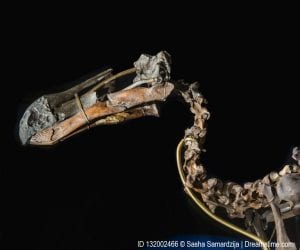“Though it must be nice to imagine there once was a time when man lived in harmony with nature, it’s not clear that he ever did.” Elizabeth Kolbert, The Sixth Extinction: An Unnatural History.
Here at PopEd, we teach about the effects of a rapidly growing population on the natural world. Much of our focus is on contemporary issues such as carbon emissions and ocean pollution; however, as Elizabeth Kolbert demonstrates in her new book, The Sixth Extinction, the ability to alter the environment is not a new phenomenon but as much a part of human nature as our curious minds and penchant for exploration. Since our earliest human ancestors began to expand into new regions—from the Eurasian continent to the Americas and even remote areas of Oceania—they transformed their habitats on a scale no other species has ever accomplished.
The title of the book alludes to the five mass extinctions that have occurred on earth, the last being the asteroid that crashed into earth around 65 million years ago, wiping out the last of the dinosaurs and obliterating about three-fourths of species. Since then, biological diversity slowly recovered, as new species of plants and animals evolved and covered the earth. Change happened slowly and extinction was a rare occurrence. Then modern humans entered the biological scene. Kolbert describes early human-caused extinctions (such as mastodons and other mega fauna) as well as modern threats to wildlife due to human-induced climate change. The current extinction rate is tens of thousands of times higher than the natural (background) rate, implying that we may be living at the edge of the next mass extinction. Yet this time, we are to blame.
Kolbert takes us through the science and history of extinction and provides a glance at where we are currently headed. A journalist by trade, she has an uncanny ability to tackle tough scientific concepts in a way that allows readers without a science background to comprehend. Moreover, she weaves these concepts into a narrative of her travels across the world as she follows experts in pursuit of endangered species. She describes her contact with beloved species such as corals while leaving space to talk about the plight of less charismatic creatures like little brown bats and army ants. Kolbert’s narrative invokes the wonder and beauty of earth’s biodiversity while emphasizing its fragility—and our role in unravelling the natural balance.
The Sixth Extinction is not a lighthearted book; I was left with a profound discomfort and sadness at the situation we humans have landed ourselves in. And while Kolbert admits the prospects are grim, she ends by reminding us that we have the choice of whether and how to act to slow these trends: “It doesn’t much matter whether people care or don’t care. What matters is that people change the world.”
It is important for young people to understand our role in causing extinction as well as the steps we must take to preserve endangered ecosystems. The Biodiversity unit in our Earth Matters high school curriculum includes readings and lessons that look at how population pressures affect biological diversity. For younger learners, check out the “People and Wildlife” unit in Counting on People.



